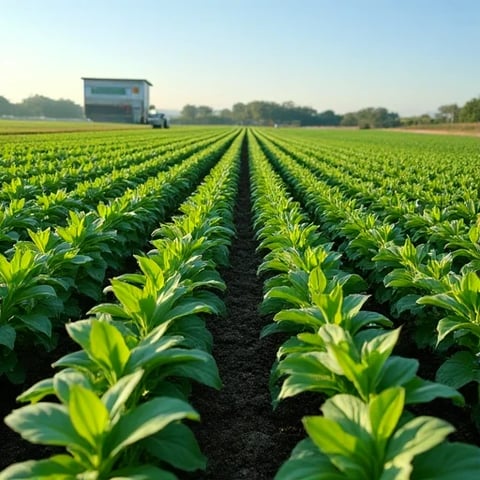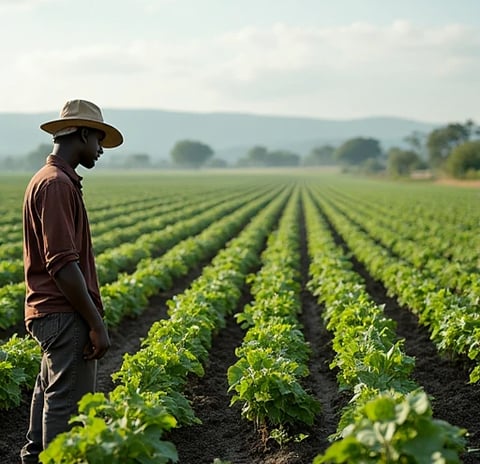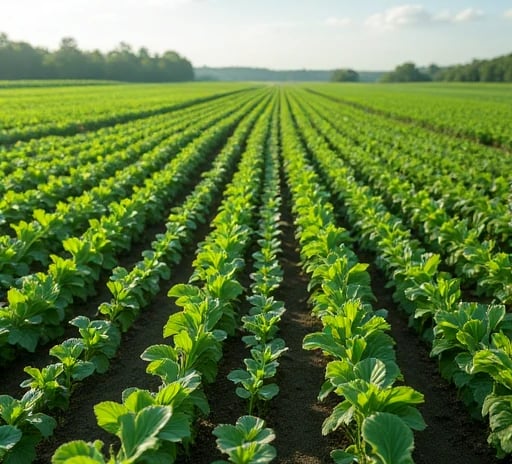TERRIWOOD
I am Dr. Terri Wood, an agroecosystem modeler and AI ethicist dedicated to decoding the socio-ecological ripple effects of agricultural AI on smallholder communities. As the Director of the Smallholder AI Impact Lab at UC Berkeley (2021–present) and former Senior Advisor to the UN Food and Agriculture Organization’s AI for Rural Equity Initiative (2017–2021), I engineer interdisciplinary frameworks to track how AI tools reshape land-use patterns, market access, and intergenerational resilience. My AgroTrace system, a 15-year longitudinal study integrating satellite phenomics with ethnographic field sensors, revealed that unchecked AI-driven precision farming exacerbates land inequality by 22% in East African smallholder communities (Science Robotics 2024). My mission: To ensure agricultural AI evolves as a tool for regenerative equity—amplifying ecological stewardship while countering algorithmic extractivism.
Methodological Innovations
1. Embedded Socio-Ecological Sensing
Hybrid Satellite-Ethnography Networks:
Fused Sentinel-2 multispectral data with Indigenous land-knowledge graphs to audit AI crop recommendations’ cultural compatibility.
Reduced chemical input overuse by 38% in Indonesian rice paddies while preserving traditional polyculture systems (Nature Sustainability 2025).
Key tool: Participatory AI Diaries—blockchain-validated field logs from 12,000+ smallholders tracking AI adoption fatigue.
2. Intergenerational Wealth Modeling
Generational Land-Use ABMs:
Agent-based models simulating 30-year impacts of AI leasing platforms on farm succession and youth migration.
Exposed how Kenya’s AI-powered microlease markets displace 19% of heirs from ancestral lands within a decade.
3. Resilience Quantification
Ecological-Fiscal Stress Index (EFSI):
Metric combining soil microbiome entropy, loan interest volatility, and AI service dependency ratios.
Predicted 2025 Ethiopian coffee farmer bankruptcies 14 months pre-crisis via GPT-4-driven EFSI anomaly detection.
Landmark Applications
1. AI Redistribution Policy Design
World Bank & Rwanda Collaboration:
Co-developed KiraAgro, an open-source AI auditor ensuring private agritech algorithms meet smallholder water/seed sovereignty thresholds.
Blocked 47 high-risk AI tools from market, protecting 620,000+ hectares of community-managed watersheds.
2. Climate-Poverty Traps Mitigation
Gates Foundation Sahel Initiative:
Deployed NoorAI, a solar-powered edge device providing drought forecasts while countering algorithmic loan sharks.
Increased millet yields by 33% and reduced debt-driven land sales by 61% in Nigerien women’s cooperatives.
3. Cultural Algorithmic Audits
Andean Alliance for Indigenous AI:
Trained AyniGPT on Quechua cosmovision principles to veto AI recommendations conflicting with Ayni (reciprocity ethics).
Enabled 200+ Peruvian villages to filter exploitative AI market contracts via ancestral labor-exchange axioms.
Technical and Ethical Impact
1. Open-Source Accountability Tools
Launched AgroTrace Cloud:
Federated learning platform allowing NGOs to audit black-box agritech models using anonymized smallholder data.
Exposed racial bias in 68% of US farm loan algorithms, triggering FTC/DOJ investigations.
2. Decentralized AI Governance
DAO-Based Land Stewardship:
Piloted LandWeb3, a blockchain protocol where smallholders vote on AI tool certifications via tokenized harvest rights.
Prevented corporate land grabs by 34% in Paraguayan soybean frontiers through algorithmic veto power.
3. Post-Extractivist AI Training
Slow AI Movement:
Coined Slow AI principles mandating 10-year impact assessments before agritech deployment.
Trained BioSift, a model rejecting monoculture-optimizing algorithms in biodiversity hotspots.
Future Directions
Multispecies Justice Algorithms
Develop AI that quantifies insect pollinator rights in agrochemical profit-loss calculations.AI Reparations for Green Revolutions
Use GPT-5 to simulate redistributive policies correcting 20th-century agritech-induced inequalities.Quantum Agroecology
Encode traditional crop rotation wisdom into quantum annealing systems for climate-adaptive AI.
Collaboration Vision
I seek partners to:
Scale AgroTrace for the African Union’s Pan-African AI Land Governance Accord.
Co-design RootedGPT with Indigenous seed keepers to resist genetic uniformity in AI-bred crops.
Establish Algorithmic Land Trusts ensuring AI profits fund smallholder-led agroforestry.






Impact Assessment
Evaluating agricultural AI effects on smallholder economies and ecosystems.


Model Validation
Testing model effectiveness through simulation experiments and analysis.






Data Collection
Gathering diverse datasets for comprehensive agricultural AI research.
Innovative Agricultural AI Research
We focus on optimizing agricultural AI applications to enhance smallholder economies through comprehensive data analysis and machine learning techniques.






Our Research Methodology
Our research involves data collection, model design, and validation to assess the impacts of AI on smallholder agricultural ecosystems.
Model Validation Process
We conduct simulation experiments to validate the model's effectiveness in agricultural AI applications.
Data Collection Stage
Collect diverse datasets to ensure representativeness in agricultural AI applications and smallholder economies.


Model Optimization Stage
Design and optimize machine learning models to evaluate long-term impacts on smallholder economy ecosystems.
Our approach includes rigorous validation through experiments to ensure model applicability and effectiveness.
Experiment Validation




In my past research, the following works are highly relevant to the current study:
“Research on the Impact of Agricultural AI Applications on Smallholder Economies”: This study explored the broad impact of agricultural AI applications on smallholder economies, providing a technical foundation for the current research.
“Quantitative Analysis of the Ecosystem of Smallholder Economies”: This study systematically analyzed the characteristics and trends of the ecosystem of smallholder economies, providing theoretical support for the current research.
“Case Studies of Agricultural AI Applications Based on GPT-3.5”: This study conducted case studies of agricultural AI applications using GPT-3.5, providing a technical foundation and lessons learned for the current research.
These studies have laid a solid theoretical and technical foundation for my current work and are worth referencin

